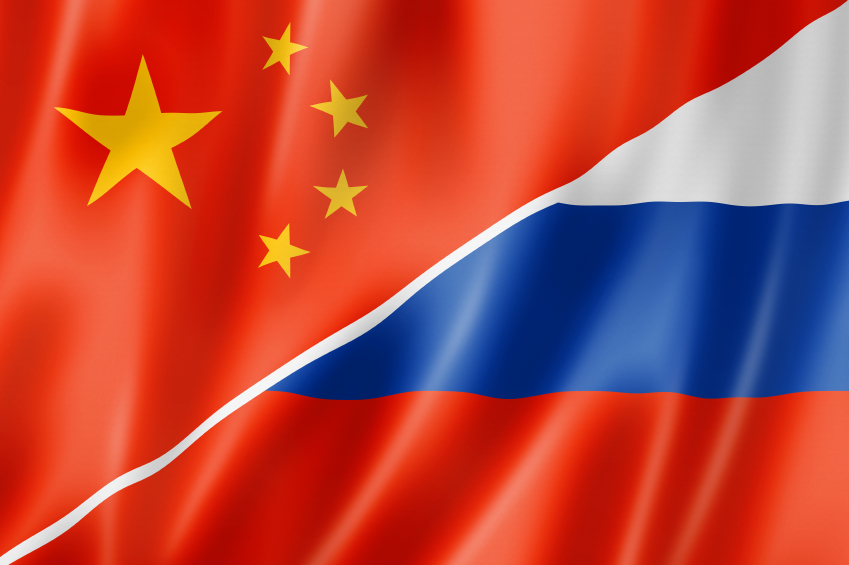Blog: China-Russia gas deal creates Arctic winners and losers

The $400 billion, 30-year China-Russia gas deal signed in Shanghai on May 21 has sparked a lot of excitement about hydrocarbons in the Russian Arctic and sub-Arctic.
Under the agreement, which had been in the works for a decade, Gazprom will supply China National Petroleum Corporation (CNPC) with 38 billion cubic meters of gas annually beginning in 2018. The deal fulfills Russia’s goal, as outlined in its Energy Strategy to 2030 (in English), to increase exports to Asia. By 2030, the strategy envisions that eastern-bound exports of oil will constitute 22%-25% (as opposed to the current 6%), and gas 19-20% as opposed to the current 0%.* Much of this gas will be delivered through a new pipeline that Gazprom is constructing from the Siberian gas fields of Kovykta (Irkutsk) and Chayanda (Yakutsk) to the Chinese border. A couple of other pipelines will also need to be built, as this handy map from the Washington Post illustrates.
Reflecting the hype surrounding the potential for Russian energy exports to the east, bookings for the Sakhalin Oil and Gas conference, happening later this year in Yuzhno-Sakhalinsk, are already four times what they were last year. It may be these resources in sub-Arctic areas like Sakhalin that are developed thanks to the China-Russia gas deal – not yet the ones in the offshore Arctic. As Elizabeth Buchanan writes over at the East Asia Forum, the deal “allows for the delay in Sino–Russian exploration of offshore Arctic energy reserves — a challenging and environmentally hazardous endeavour, which will require more time to develop the necessary technology. In the meantime, the large gas reserves in Eastern Siberia and the Russian Far East can sooner be brought onstream.” So perhaps the biggest consequence of the China-Russia gas deal is increased development of sub-Arctic oil and gas fields in the Russian Far East in the short term while setting a precedent for cooperation between the two countries that can be expanded to the Arctic in the long term.
With its still-booming economy, China is hungry for not just Russia’s oil and gas resources, but those of the wider Arctic region, too. Several state-owned Chinese oil companies have interests in Arctic hydrocarbon development. CNPC has a 20% stake in the Yamal project, which is in the Arctic. Once Yamal is up and running, during the summer months, gas will be transported east along the Northern Sea Route to Asia (in ice-class 7 LNG tankers to be built by South Korean company Daewoo). In winter, the LNG will travel west to Europe. CNPC is also partnering with Rosneft to explore three fields in the Barents and Pechora Seas. And in Iceland, China National Offshore Oil Corporation (CNOOC) is partnering with the country’s Eykon Energy to explore the Dreki oil field off the island’s northeast coast.
Chinese linkages between energy, defense, and the north
Reflecting the linkages between energy security, defense, and the Arctic for China, earlier this month, a Chinese military think tank issued its 54,000-word Strategy Assessment 2013, which has a definite focus on the Arctic, among other regions. I haven’t been able to locate the assessment online, but this article from China News (in Mandarin) by reporter Tao Shelan sums up its polar content. While Tao’s entire article is worth reading or running through Google Translate, one particularly important section explains the Arctic’s geoeconomic potential for China:
“China is located in the northern hemisphere and has an important strategic interest in the Arctic related to the sustainable development of the national economy and national security. The rich oil and gas resources in the Arctic and convenient shipping conditions for ensuring sustainable economic development in China are important. The future of the Arctic is expected to become China’s important energy supply base overseas. China will follow the equality and mutual benefit, cooperation and win-win principle, countries with Arctic energy cooperation. China is concerned about the potential impact of accelerated melting of Arctic ice on the global economy and trade. The Arctic route may constitute a huge impact on China’s future maritime shipping, hope and pragmatic cooperation with Arctic countries, mutual benefit and win-win.”
It may be win-win, but with many analysts thinking China got the better end of the deal in negotiations with Gazprom, some countries will win more than others.
China: No fear of pipelines to Russia
With its long, eastward facing coast and land borders with multiple hydrocarbon-producing countries, China’s ability to pursue numerous oil and gas options gives it an immense amount of flexibility and leverage in negotiating deals. Vladimir Portyakov, deputy director of the official Institute of Far Eastern Studies in Moscow, stated in an interview with the Christian Science Monitor, “It’s an issue of national security for China. Sea routes for oil and liquefied natural gas are vulnerable. Much better to have it directly delivered in pipelines from a neighboring state.” China, however, is likely acting more out of a desire to simply diversify its sources of oil and natural gas rather than shift away from maritime transport of hydrocarbons.
Regardless, China’s deal with Russia shows its continued faith in building pipelines to Russia and through the restive autonomous province of Xinjiang to Turkmenistan, Kazakhstan, and Uzbekistan (map) despite the geopolitical insecurities inherent within these fixed infrastructures that make many smaller European countries uneasy. Just as China invests more in pipelines, countries like Lithuania (100% reliant on Russian gas imports) are seeking to move away from them and instead build LNG import terminals such as Klaipėda on the Baltic Sea.
And for Russia, the gas deal exemplifies the energy sector’s pivot to Asia, which is happening for both political and geographic reasons. One, as noted above, many countries in Europe are increasingly viewing Russian gas supplies with wary eyes, even as they remain highly dependent on them. Two, the fields in western Siberia that supply Europe are being depleted. As the Russian energy strategy explains (p. 75), the “depletion of the main gas deposits in the Nadym-Pur-Taz district of the Tyumen Region” has led to the “necessity of developing new gas-producing centers on the Yamal Peninsula and continental shelf of the Arctic and Far Eastern seas, in the Eastern Siberia and Far East.” Russia has to look to Asian countries to buy the gas from these areas – not Europe. Luckily, China is not too worried about building pipelines to Russia, unlike much of Europe.
Consequences for North American hydrocarbon exports
The Russia-China gas deal also affects prospects for North American oil and gas exports. China’s deal with Russia could put downward pressure on LNG prices in East Asia, where they are generally the highest in the world. Unlike oil, which is sold on a global market, the market for LNG is regional. The deal between Gazprom and CNPC is rumored to be between $10 to $10.50 per million Btu, which is almost 25% cheaper than the current $13 spot price in Asia. As Reuters suggests, the relative bargain that China won from Gazprom means that other countries like Japan and South Korea, which are also interested in Arctic LNG and even gas via pipelines to Russia, might not have to pay as high prices. This could spell bad news for Canada and the U.S., which are eager to capitalize on high Asian gas prices by exporting their surplus gas. Unlike Russia, their resources are trapped. They can’t easily lay pipelines across the wide Pacific Ocean.
Canada has conditionally approved the Northern Gateway pipeline, which would send oil and gas from Alberta across British Columbia to Asia – but it will likely never actually get built in part due to indigenous and environmental protest. And in the U.S., although the federal government has been issuing more permits lately to allow the export of natural gas to countries with which the U.S. does not have a free trade agreement, these projects, such as the Jordan Cove LNG liquefaction terminal in Oregon, won’t be up and running until at least 2017.
The winners: Asia – and maybe the Arctic
At the end of the day, it looks like China – and Asia – are the winners. Russia has to settle for accepting a relatively low price for its gas – the same price that Europe pays on average. North America will have to settle for the crumbs if they ever manage to build the pipelines and LNG export terminals necessary to export their overflowing resources east across the Pacific.
In the near term, the Arctic environment may also be a winner. With the attention of China and other investors now on East Siberia and the Russian Far East, the Gazprom-CNPC gas deal could see some Arctic offshore projects put on hold. Then again, one should never underestimate the ability of China to juggle multiple projects at once – by all means necessary.
*Note: Since Russia already exports natural gas to Japan and South Korea from Sakhalin, I am not sure why the report’s current figure for natural gas exports to East Asia is 0%.
This post first appeared on Cryopolitics, an Arctic News and Analysis blog.




